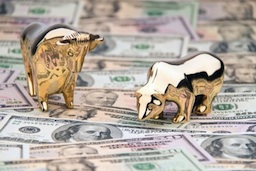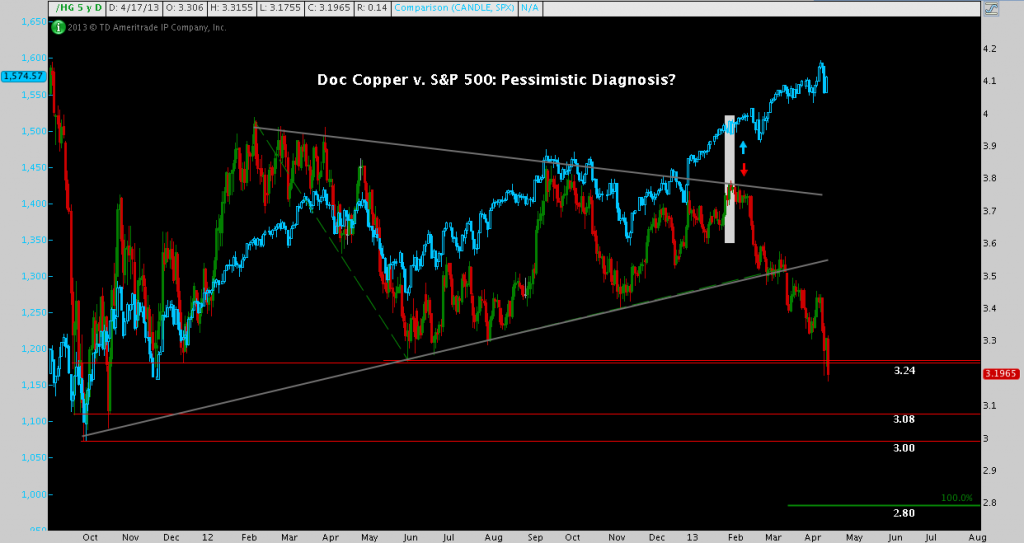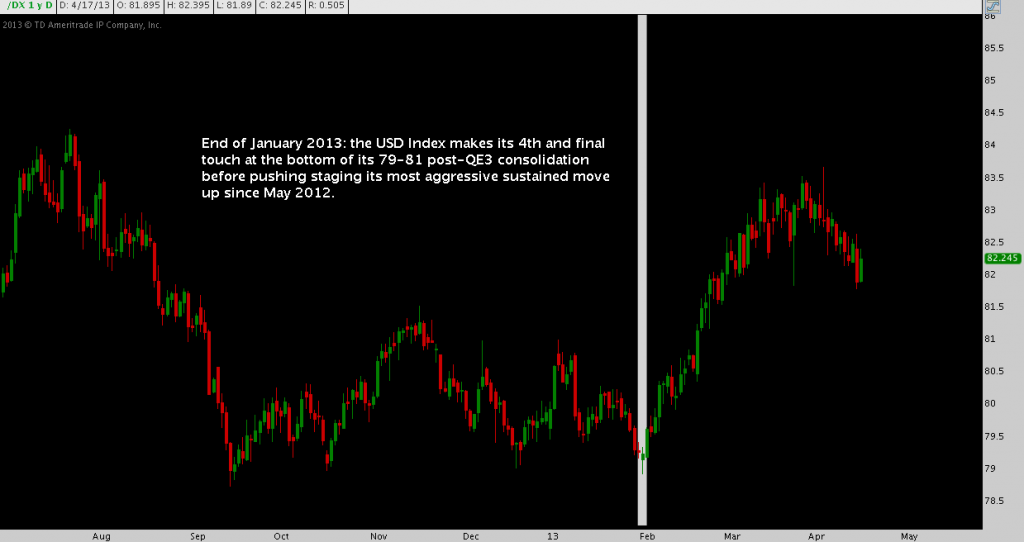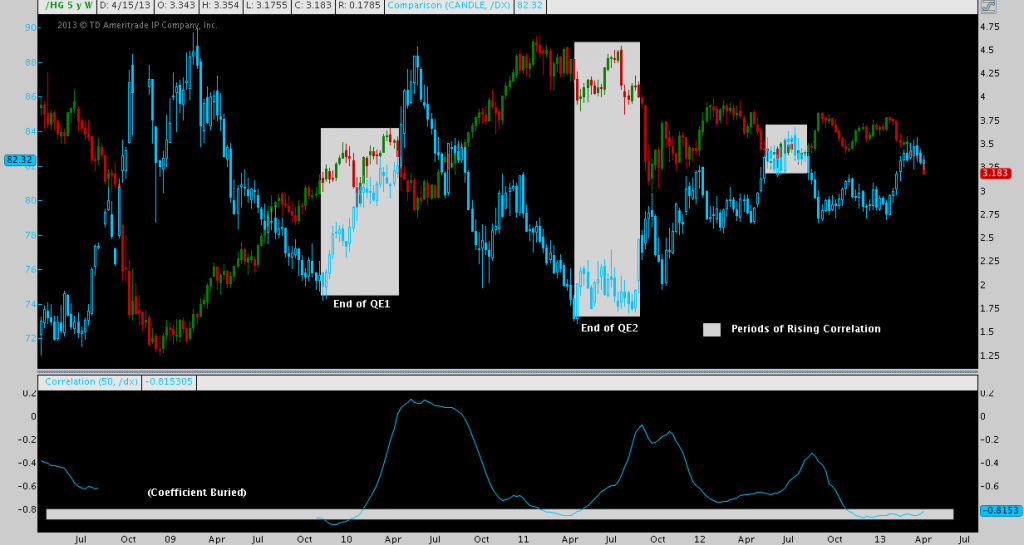 By Andrew Kassen Copper is often held up when analysts and commentators are having an “intermarket analysis” moment to bolster whatever argument they’re peddling at as a leading read of economic health or stock market internals.
By Andrew Kassen Copper is often held up when analysts and commentators are having an “intermarket analysis” moment to bolster whatever argument they’re peddling at as a leading read of economic health or stock market internals.
Because of its celebrated acumen as diagnostician of financial conditions, the rust-toned base metal is often referred to as “Doctor Copper“. There are arguments and data that plainly bear this out; and others that can make it seem a little more questionable. As usual, it’s a question of what data one looks at, and the timeframe under consideration.
Though it has held up better than peers gold and silver, Doc Copper has been sliding aggressively. At the same time, broad stock indices such as the S&P 500 continued rising with minimal hesitation. The result is a yawning gap and widening inverse correlation (click image to zoom):
Assuming its storied reputation holds up, Doc Copper is prognosticating some very sour times ahead for stocks!
At least, that’s what the common wisdom among the aforementioned mix of pundits would suggest.
There is one variable at work in the current environment that is very rarely (astonishingly so) mentioned, much to the detriment of any point of view or analysis that deploys “Doc Copper” as contrary/confirming flag in a stock market wellness check.
Look again at the chart above, focusing on the vertical white bar and accompanying blue and red arrows that immediately follow. That’s not only the point where Doc Copper failed at symmetrical triangle resistance and began to go off the rails, but where the aggressive inverse correlation between the metal and US equities took hold.
But what’s noteworthy, if anything, about that point at the end of January? (click image to zoom)
The US Dollar bottomed and staged a 6% rally, trough-to-peak (it remains up 4% since the January bottom as of this morning), that’s what.
Metal prices, like any instrument, represent the intersection of countless variables, so it would be disingenuous – not to mention naively foolish – to lay the grave state of Doc Copper solely at the feet of a resurgent Greenback. But, as a USD-denominated commodity, the relative strength of the USD in the currency markets plays a significant, if not defining role in the value of copper.
Admittedly, January to mid-April is a very thin slice of time. Let’s have a look at the Copper/USD relationship over a longer timeframe (click image to zoom):
Dislocative monetary policy events and subsequent rebalancing activity aside, the inverse correlation between Copper and the USD is steady and decisive.
This doesn’t completely turn the Magic Economic 8-Ball status of Doc Copper on its head; but it does demonstrate that its function as economic barometer and market litmus test is much more complicated than commonly suggested. It also pounds a railroad spike in the correlation-or-causation coffin that says stocks inexorably follow copper around.
Doc Copper still has a prescription, but the pill isn’t as easy to swallow. As usually results when you began peeking into the weeds of market wisdom, what seems straightforward and reliable is anything but. The main culprit complicating the formerly simple picture? The USD-to-Equity correlation. Keep in mind, as Andy Nyquist pointed out here and here on See It Market recently that correlation is anything uniform over time.
Here’s the mind-bending conundrum, in brief: If the Greenback is negatively correlated with stocks, and Copper is negatively correlation with the Greenback, then Copper and Stocks are positively correlated! So far, no problem. But shift the USD/Stock variable, and the Copper/Stock relationship goes askew, as well. A strong or weak Dollar is an inefficient indicator of economic vitality. Moreover, as it turns out (this in itself may be a surprise to many) the Dollar’s behavior has a fickle relationship relationship with stocks. As a result, the relationship between copper and the economy or copper and equities (an important distinction in itself, given that the stock market is not the economy) is a messy and complicated affair.
It’s OK: the data adequately supports copper’s claim to its venerable title. But next time you hear an interview, read an article or see a chart extolling its virtues as an indicator, remember: copper may be the doctor, but it serves as the personal physician at the pleasure of King Dollar.
Twitter: @andrewunknown and @seeitmarket
Author holds short position in Copper Futures (symbol: HG) and Long SPY puts at the time of publication.
Any opinions expressed herein are solely those of the author, and do not in any way represent the views or opinions of any other person or entity.










